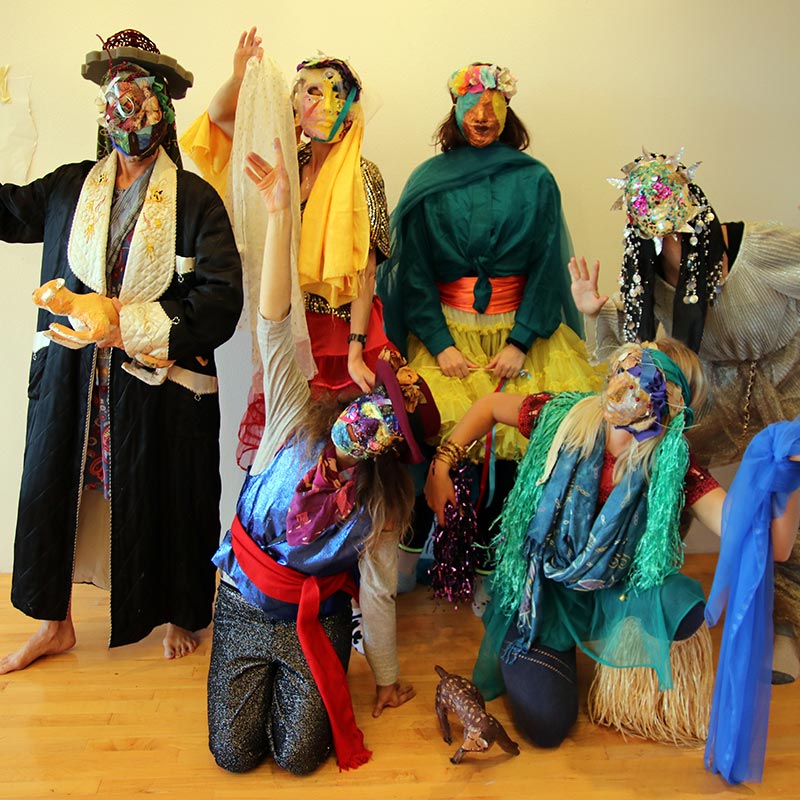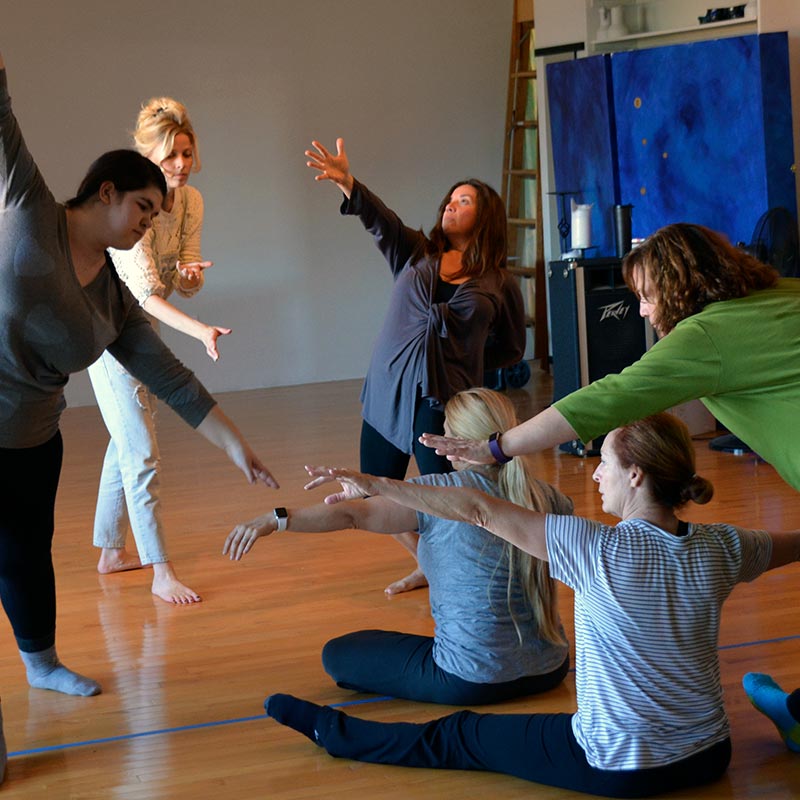The field of Expressive Arts Therapy (aka EXA) is a method and philosophy of healing and creating change through the arts.
The field of Expressive Arts Therapy was founded in the 1970′s, by a revolutionary group of artists, therapists and thinkers, including Shaun McNiff and Paolo Knill at Leslie University, in Boston Massachusetts. In the intervening decades, it has become among the fastest growing helping professions in the world for a very simple reason. Expressive arts helps artists understand how to be helpful directly through the arts, without reliance on psychology.
The institute curriculum is based on the model of Intermodal Expressive Therapy that was developed by Paolo Knill, Shaun McNiff, Norma Canner, Stephen K, Levine, Elizabeth McKim and others. This model integrates the various arts disciplines: —visual art, music/voice/sound, dance/movement, poetry/writing, drama/ theater —into an interdisciplinary framework with an emphasis on creative process. At the root of this powerful work is the development of a deep ground in our senses and our sensibilities. Students devote their studio experience to the practice of following their innate body wisdom and the phenomenon of their internal processes, through artistic and aesthetic exploration. Through our creative abilities and our attentive spirits we can sharpen our understanding of the inherent knowledge we carry in our bodies.
“The arts are a big enough container to hold our most profound grief or deepest joy. Art can help us meet our greatest challenges, facing struggles with dignity, and celebrating the beauty of our lives.” Judith Greer Essex
Expressive Arts Therapy has a rich and complex philosophical background, which cannot be easily summed up. However there are four tenets which are of value in differentiating it from other arts therapies:
Expressive Arts Therapy is based upon the practice and language of the studio.
Expressive Arts Therapists use low skill, high sensitivity methods of art making which emphasize art as a tool for self-discovery. Art-making helps us restore what is lost, broken and missing in our lives. It leads to emotional and psychological healing through the aesthetic experience.
Expressive Arts Therapy is grounded in aesthetics.
The artist is immersed in a creative dialogue with art and art-making that is phenomenological in nature. That is to say they engage their work by noticing its observable physical properties such as color of line, quality of motion, or rhythm of song, without assigning meaning to these qualities. In this way, artists remain “with” their images and processes, without the literal interpretation that sometimes interferes with the process of self-discovery through art-making.


Expressive Arts Therapy is interdisciplinary.
Each art discipline offers a unique sensory experience or modality. For instance, the essential sensory modality of dance is kinesthetic, whereas in music it is auditory. By working across art disciplines, we use the multi-sensory potential of imagination, and its ability to inform us about our past, our present and our personal myth. By transferring feelings and images between media, one’s experiences are deepened and amplified beyond their original form.
Expressive Arts Therapy is informed by post-modern views of philosophy and psychology.
Expressive Arts Therapy utilizes the imagination’s ability to connect us to the world of myth, meaning and images. Such ideas appear in work of James Hillman, archetypal psychology, narrative, and feminist approaches to psychotherapy.

